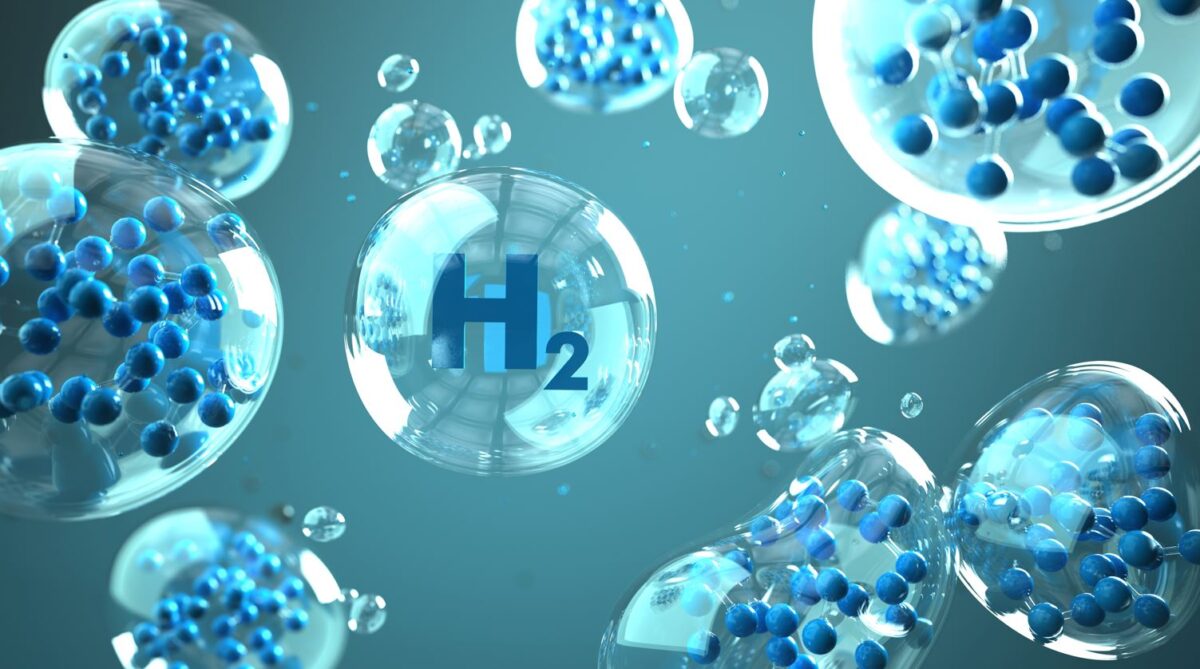The Biden-Harris Administration released the U.S. National Clean Hydrogen Strategy and Roadmap, a framework for accelerating the production, processing, delivery, storage, and use of clean hydrogen.
Produced with net-zero carbon emissions, clean hydrogen will be key in the emerging clean energy economy and will help toward achieving the President’s goal of a 100% clean electrical grid by 2035 and net-zero carbon emissions by 2050.
“Accelerating the deployment of hydrogen is key to achieving President Biden’s vision for an affordable, secure clean energy future,” said U.S. Secretary of Energy Jennifer M. Granholm. “That’s why DOE worked alongside our federal partners to develop the U.S. National Clean Hydrogen Strategy and Roadmap that will lay the foundation for a strong and productive partnership between the public and private sectors and will guide government and industry to realize the full potential of this incredibly versatile energy resource.”
Solar and hydrogen
Electrolysis, the process that creates hydrogen fuel, requires large amounts of electricity. The electricity demand presents a great fit for coupling solar energy and hydrogen production.
Clean hydrogen has many uses and can play a vital role in reducing emissions from some of the most energy-intensive sectors of our economy, including industrial and chemical processes and heavy-duty transportation. Hydrogen produced with carbon-free electricity can also support the expansion of variable forms of renewable power by providing a means for long-duration energy storage and offers flexibility and multiple revenue streams for all types of clean power generation including renewables.
Clean hydrogen can help reduce harmful air pollution and decarbonize industrial, chemical and other polluting sectors, which will benefit disadvantaged communities, because they are often in the most industrialized areas and have suffered disproportionately from local air pollution. The DOE’s National Clean Hydrogen Strategy and Roadmap and President Biden’s Justice40 Initiative serve as pillars driving the energy justice efforts by Hydrogen and Fuel Cell Technologies Office (HFTO) and the Hydrogen Program.
In addition to releasing the roadmap, the Biden Administration has earmarked billions of dollars of funding for investing in the advancement of clean hydrogen. In 2021, Congress passed, and President Biden signed into law, the Infrastructure Investment and Jobs Act, also known as the Bipartisan Infrastructure Law. This legislation authorizes and appropriates $9.5 billion for clean hydrogen. Furthermore, in August 2022, President Biden signed the Inflation Reduction Act (IRA) into law, which provides additional policies and incentives for hydrogen including a production tax credit that has further boosted a U.S. market for clean hydrogen.
Clean hydrogen offers substantial economic benefits and will help create tens of thousands of new, good-paying jobs across the country, particularly in underserved communities. By enabling the development of diverse, domestic clean energy pathways across multiple sectors of the economy, clean hydrogen will strengthen energy independence and accelerate the manufacturing boom in the U.S.
“President Biden understands that growing America’s clean hydrogen capability can spur good-paying union jobs, support local economic development, and help decarbonize industries long seen as ‘hard to decarbonize,” said Ali Zaidi, assistant to the President and national climate advisor. “This roadmap will align the private and public sectors on a shared path to drive faster toward a cleaner, more secure energy future.”
The Strategy and Roadmap provides a snapshot of hydrogen production, transport, storage, and use in the United States today and a vision for how clean hydrogen will contribute to national decarbonization goals across multiple sectors in the future. It examines future demand scenarios—with strategic opportunities for the domestic production of 10 million metric tonnes (MMT) of clean hydrogen annually by 2030, 20 MMT annually by 2040, and 50 MMT annually by 2050.
The Strategy and Roadmap identifies three key strategies to ensure that clean hydrogen is developed and adopted as an effective decarbonization tool, including:
- Targeting strategic, high-impact uses for clean hydrogen, which will ensure that clean hydrogen will be used in applications that will benefit the most and where limited alternatives exist.
- Reducing the cost of clean hydrogen by catalyzing innovation and scale, stimulating private sector investments, and developing the clean hydrogen supply chain; and
- Focusing on regional networks with large-scale clean hydrogen production and end-use in close proximity, enabling maximum benefit from infrastructure investment, driving scale, and facilitating market liftoff while leveraging place-based opportunities for equity, inclusion, and environmental justice.
The U.S. National Clean Hydrogen Strategy and Roadmap was released in draft form for public comment in September 2022. The final version released reflects feedback from stakeholders in industry, academia, and the non-profit sector, as well as state, local, and Tribal governments. It also incorporates findings from DOE’s March 2023 report, Pathways to Commercial Liftoff: Clean Hydrogen. The plan is for the Strategy and Roadmap to be updated every three years.
This content is protected by copyright and may not be reused. If you want to cooperate with us and would like to reuse some of our content, please contact: editors@pv-magazine.com.









By submitting this form you agree to pv magazine using your data for the purposes of publishing your comment.
Your personal data will only be disclosed or otherwise transmitted to third parties for the purposes of spam filtering or if this is necessary for technical maintenance of the website. Any other transfer to third parties will not take place unless this is justified on the basis of applicable data protection regulations or if pv magazine is legally obliged to do so.
You may revoke this consent at any time with effect for the future, in which case your personal data will be deleted immediately. Otherwise, your data will be deleted if pv magazine has processed your request or the purpose of data storage is fulfilled.
Further information on data privacy can be found in our Data Protection Policy.